Ice Follies 2020
February 15th - 29th, 2020
Theme: mkomiiwi: be ice, turn to ice, be covered in ice, be icy
Exploring that transformation from water to ice and from one realm to another. As we shift and adapt new worlds are opened and old pathways disappear. Our mode of travel changes. Ice heaves form from prevailing winds. Ice is pushed up against itself, the shore.
Megan Feheley, Jenna Dawn Maclellan, Christine Negus, Emily Pelstring & Jon Sasaki, Pressure Cracks, 2020
Pressure Cracks are caused by fluctuations and instabilities; in the heat of the day, the ice expands and, in cases of rapid transitions to the cold of night, the ice contracts, ruptures, and splinters violently. These ruptures exist as harbingers of environmental instability that prompt us to be more attentive to our actions, as well as to the world around us. Relatedly, this multimedia exhibition considers sites of vulnerability not only within physical environments, but within our contemporary social and political structures as well. Pressure Cracks asks: when do we falsely assume security, and what are the risks of these assumptions? What is fleeting, and what can we trust to endure?
Pressure Cracks lures viewers onto the ice with a familiar northern scene — an ice-fishing shack accompanied by a snowmobile, preparations for a campfire, and an industrial tarp — only to reveal that this scene is actually one made of fantasy and artifice. Rather than steel and rugged wood, the snowmobile and logs are soft-sculpture works delicately stuffed and sewn with brightly coloured textiles by Jenna Dawn Maclellan. Moreover, the neighbouring industrial tarp is revealed to have fine, thoughtful cut-outs. Through a process akin to birch bark biting (an Indigenous mark-making practice using thin sheets of folded birch bark which are then bitten to make designs), Megan Feheley’s brilliant orange mola: consent tarp uses tarpaulin to index and transfer knowledge visually in a world that may one-day be without birch bark.
Inside the ice-fishing shack, visitors are confronted with Emily Pelstring’s ghostly animations, which appear to emerge out of cracks in the shack itself, while two videos play on loop: Jon Sasaki’s Pictures of the Floating World follows a bouncy castle cast adrift on a lake, kept afloat only by a small, gas-powered generator. Christine Negus’s our home watches a tiny wooden cabin catch fire while two ghosts look on. As one ghost smiles, the other frowns — a visual representation of the range of possible responses to the destruction of the world as we know it.
Megan Feheley, Mola: Consent Tarp
In this work, designs based on birch bark biting (an Indigenous mark-making practice using thin sheets of birch, folded and bitten into to make designs) as well as words in Cree language are cut out of orange tarpaulin. mola or __ means no in ililimowin, the dialect of Cree my family speaks. Creating the birch bark biting-like designs in the tarpaulin investigates tarpaulin as a mode of transferring knowledge visually in a world without birch bark, a growing anxiety and possibility with impending climate catastrophe.
In mola, the permanence of plastic is something considered to stand in duality: it is a product of an extractivist industry that has been weaponized against Indigenous bodies and land, is inescapable in this day and age; but it is also something that is utilitarian, recyclable, inexpensive and could survive impending climate events where birch bark may be scarce, entirely extinct, or in other ways unavailable. My understanding of ililiw/Cree visual culture is that objects and belongings have a certain lifespan and weren’t intended to last forever: it is a vital function for things to be remade and retold so that the teachings they hold can be recontextualized for another generation. Colonization has violently interrupted this mode of production through apocalyptic events that Indigenous peoples have (and haven’t) survived, and my concern is about any future events caused by climate change could jeopardize our knowledge of production and transmission further. Although in a heartbreaking double bind, mola considers how to create things that could potentially withstand generational gaps in production. The permanence of plastic is evidence of this anxiety – what if someone isn’t there to pass knowledge inherent ways of making along and ensure that things are remade and transferred? Even in futile attempts. how can I protect what I have to say to the future? I want future generations to understand that their boundaries deserve respect – boundaries on their bodies, lands, languages, loves. I want this regardless of past, present and impending apocalypses. I want out future generations to know how to say no.
Artist Bio:
Megan Feheley is a two spirit ililiw (Moose Cree) interdisciplinary artist and curator living and working out of Toronto. They are currently working towards their BFA in Indigenous Visual Culture at OCAD University, and work predominately in sculpture/installation, beadwork, textiles, painting and video. Megan is passionate about resurgent practices, language revitalization, working with materials that connect them to their homeland, and exploring Indigenous and queer futurity.


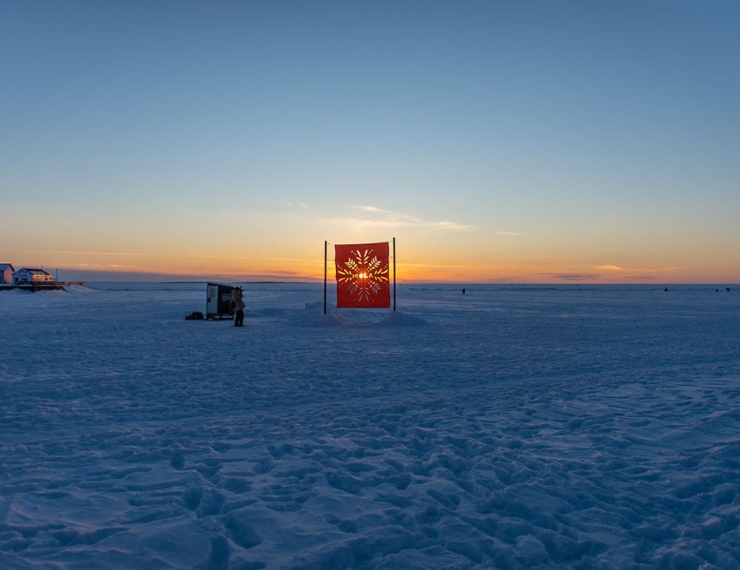
Jenna Dawn Maclellan, Le Homecoming, 2017
This series of textile works by Jenna Dawn Maclellan is inspired by the artist’s return to Northern Ontario’s rural regions after having spent several years in Montreal. Confronted with the challenges posed by this vast expanse of boreal frost, she formulates a variety of playful strategies to navigate the North anew. With her snowmobile, chain saw, and logs – all sewn – Jenna Dawn Maclellan pays homage to the North of her childhood. The objects sewn by Maclellan are as familiar as they are fantastic. Being transposed into textile gives an air of storied marvelousness to their otherwise ordinary nature. This is how objects found in so many Northern Ontario sheds and garages are transformed into genuine icons of northernness.
Artist Bio:
Jenna Dawn Maclellan, artist – bilingual cultural mediator – educator, was born in the prairies, raised in the northern Ontario community of Sioux Lookout and has lived and worked in Montreal and Sudbury before installing in Ottawa. Location, accessibility and personal encounters have greatly influenced her socially-engaged practice, where she activates memory and site through performative gestures in public and private spaces inspired by the everyday. She is a story-maker, a builder of social sculptures, a guardian of memories, a social activator and a transmitter of lost skills. Moreover, Maclellan uses her unique life-experiences to inform her artistic practice as a way of sharing joy with others. Specifically, the works of Le Homecoming are meant to be playful and interactive, as maclellan questions her own ability to return north to the land of her childhood. In this way, she re-invents creative survival strategies for a young woman use in order to survive the harsh climate of her beloved Northern Ontario landscape. Maclellan has an MFA in Fibre and Material Practices. Through her non-linear journey on four continents, she has been influenced by her ability to see the world through the eyes of others. In this process, Maclellan has created collaborative community-based projects and exhibited in public spaces, galleries, museums and festivals in Canada and internationally including Le Musée des maîtres et artisans du Québec, Diagonale, MAI, The Leonard and Bina Ellen Art Gallery, Toronto Free Gallery, The Thunder Bay Art Gallery, La Casa de la Culture in Hulguin Cuba, El Museo Textil de Oaxaca in Mexico, La Galerie de Nouvel-Ontario, La Centrale Powerhouse Gallery and in partnership with the Peggy Notebaert Nature Museum in Chicago.
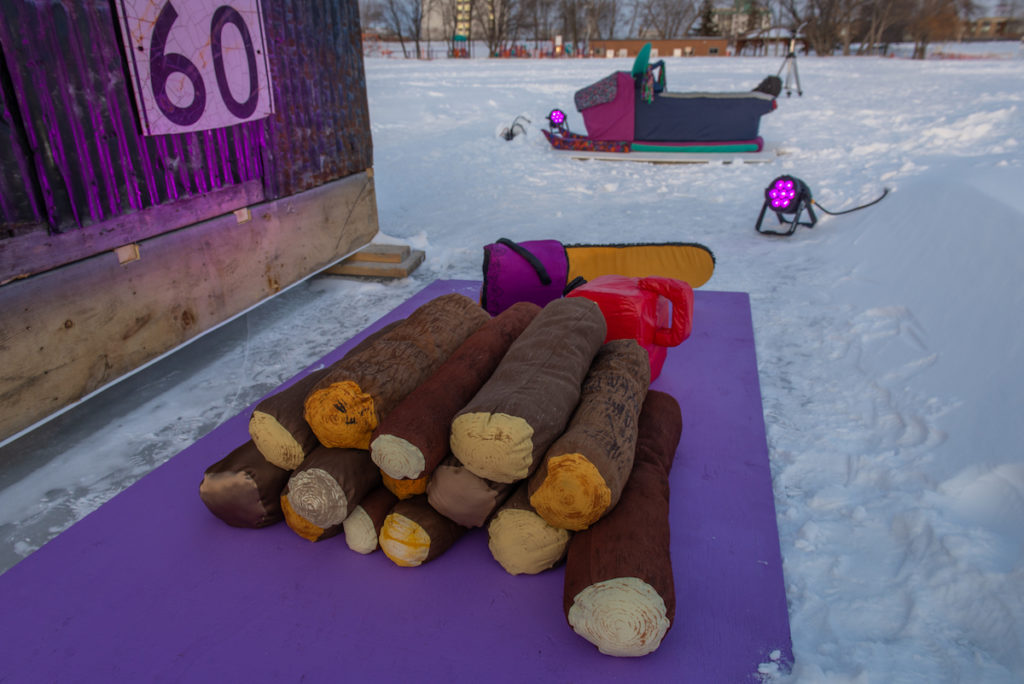

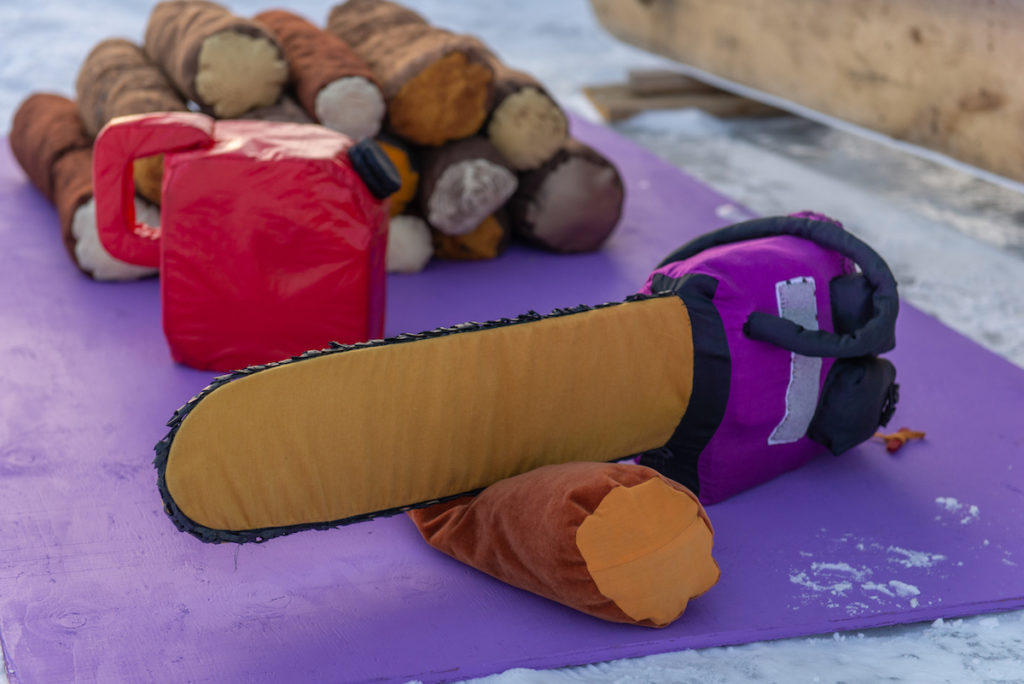


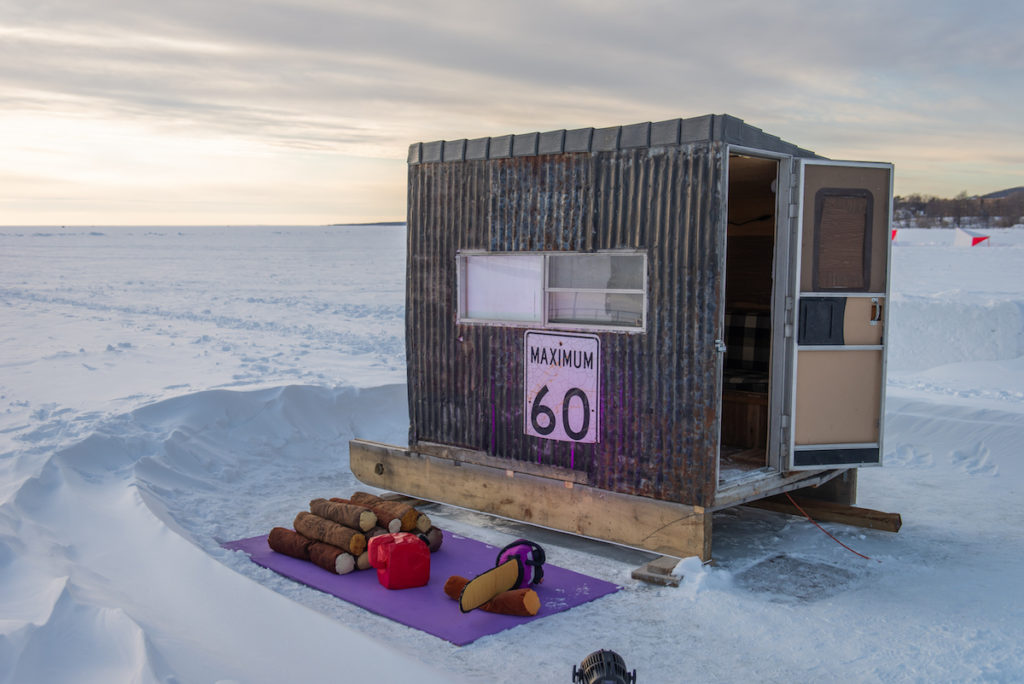

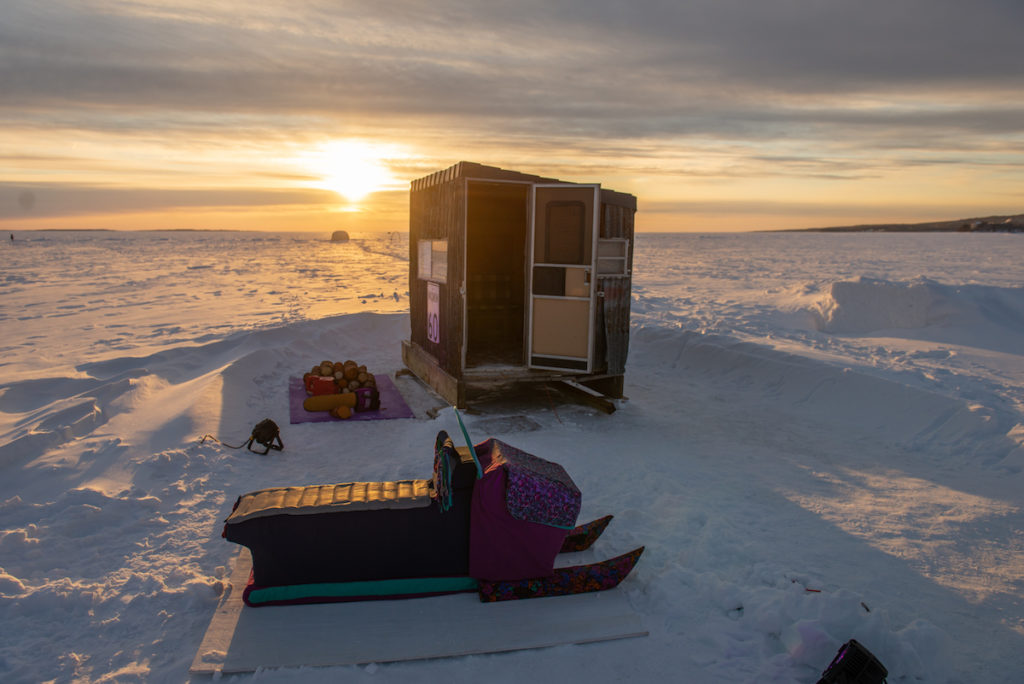
Christine Negus, Our Home, 2013
A miniature model of a cabin is set aflame, while a droning version of Loretta Lynn’s “This Haunted House” rings out, as two ghoulish tree protectors stare on, in horror and delight.
Artist Bio:
Christine Negus is a multidisciplinary artist and writer whose work addresses the fallacy of resilience and progress, and the redemptive potential of feminist violence and humor, culminating in a practice filled with lacerating works that reflect on memory, alienation, anxiety, and trauma. Negus obtained her MFA from Northwestern University in 2010 and her BFA from Western University in 2008. Some of her notable exhibitions include: the8fest, CROSSROADS, Tangled Art Gallery, MIX NYC, Dunlop Gallery, Queer City Cinema, AKA artist run, Artists’ Television Access, Milwuakee Underground Film Festival, Museum London, Media City Film Festival, Art Gallery of York University, Swedish Film Institute, and Kasseler Dokfest. She has had solo exhibitions and screenings at RPL Theatre, Forest City Gallery, Gallery TPW, gallerywest, Julius Ceasar, The Pitch Project, and Modern Fuel. Negus has upcoming solo exhibitions at Land Line Chicago, YYZ, and Artcite Windsor. Her work has been reviewed in numerous publications, including The Globe and Mail and Modern Painters and an interview on Negus’ practice appeared in the Spring 2016 issue of BlackFlash magazine. Negus received the National Film Board of Canada;s Best Emerging Canadian Video/Filmmaker award through Images Festival 2008.
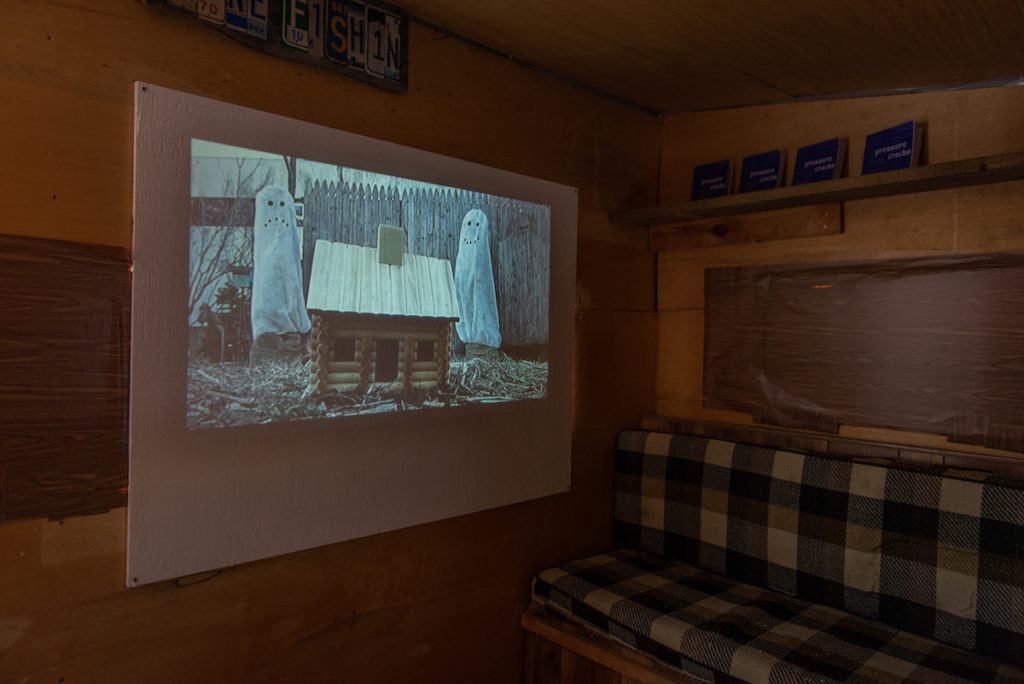
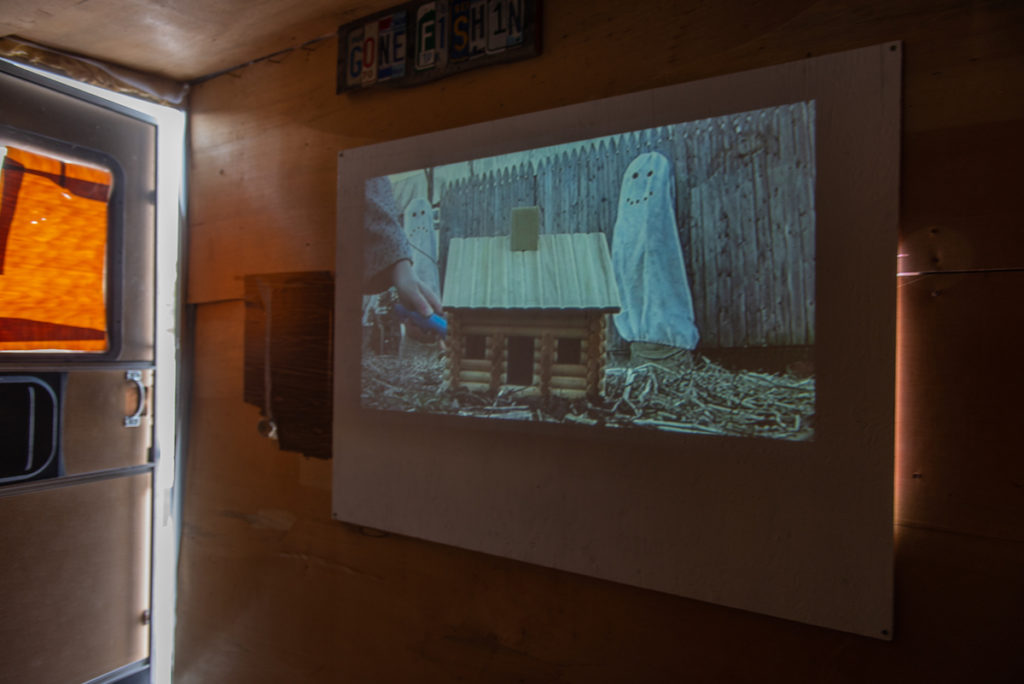
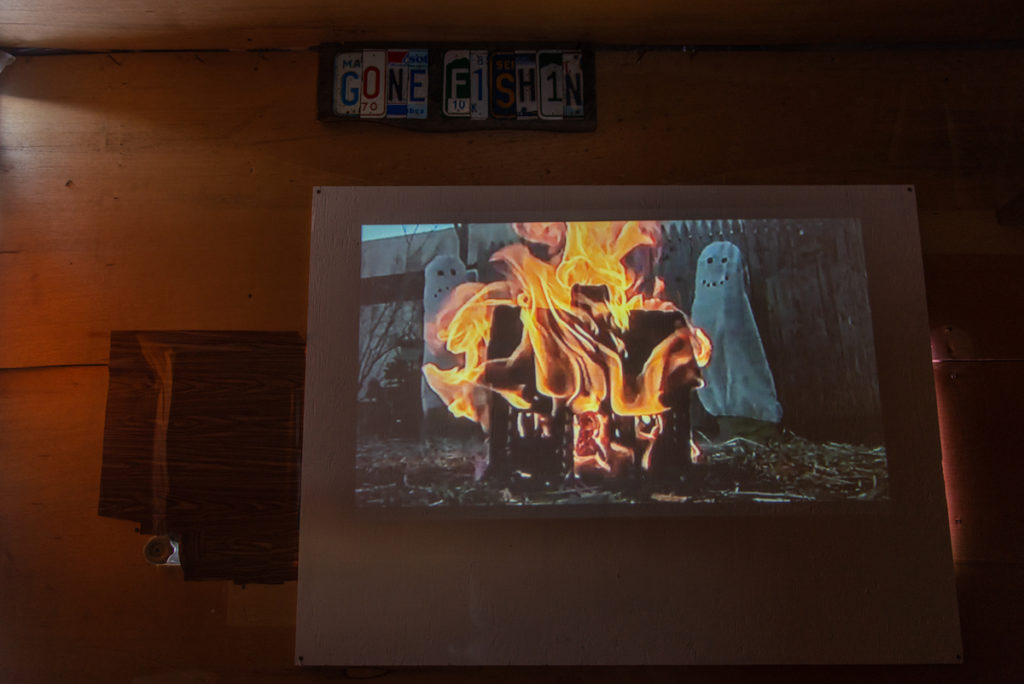



Emily Pelstring, The Haunting Blob, 2017-2020
Pelstring’s The Haunted Blob is a projected animation of A ghostly dance sequence. The dance also appears in her film Witch’s Work, where it represents a chrysalis like “blob” phase in a character’s life, post-birth and just before she transforms into a snake. The moment is typically places inside the gallery’s walls as a colourful, entertaining spectacle and as a fragment of a story embedded in architecture. In its Pressure Cracks iteration, the “blob” takes up a ghostly residence in the ice shack glimpsed through a cartoon shack.
Get an HD view of The Haunting Blob HERE
Artist Bio
Emily Pelstring is an artist and filmmaker based in Canada. She is a full-time faculty in the Department of Film and Media at Queen’s University, and her creative work has been supported by grants from the Social Sciences and Humanities Research Council and the Canada Council for the Arts. Her films, performances and installations have been shown internationally in galleries and festivals. In her single-channel animations, she experiments with optical filtering and textural effects by processing images through analog video effects units, as well as weirder and more convoluted means of image manipulation. Her installations have employed holography, stereography, animated Peppers Ghost displays, and projection-mapped video, in conjunction with built material elements. These pieces reference magic shows and the occult, and draw links between spirituality, wonder, and illusion. Emily also has a longstanding investment in the creative strategies of feminist media art, particularly practices of reclaimative myth-making, collaboration, collectively, speculative futurisms, and camp aesthetics. These interests have led her to build collaboratively-produced bodies of work under two collective monikers: Inflatable Deities, an artistic duo with Jessica Mensch; and The Powers, a music performance and video collaboration with Jessica Mensch and Katherine Kline.
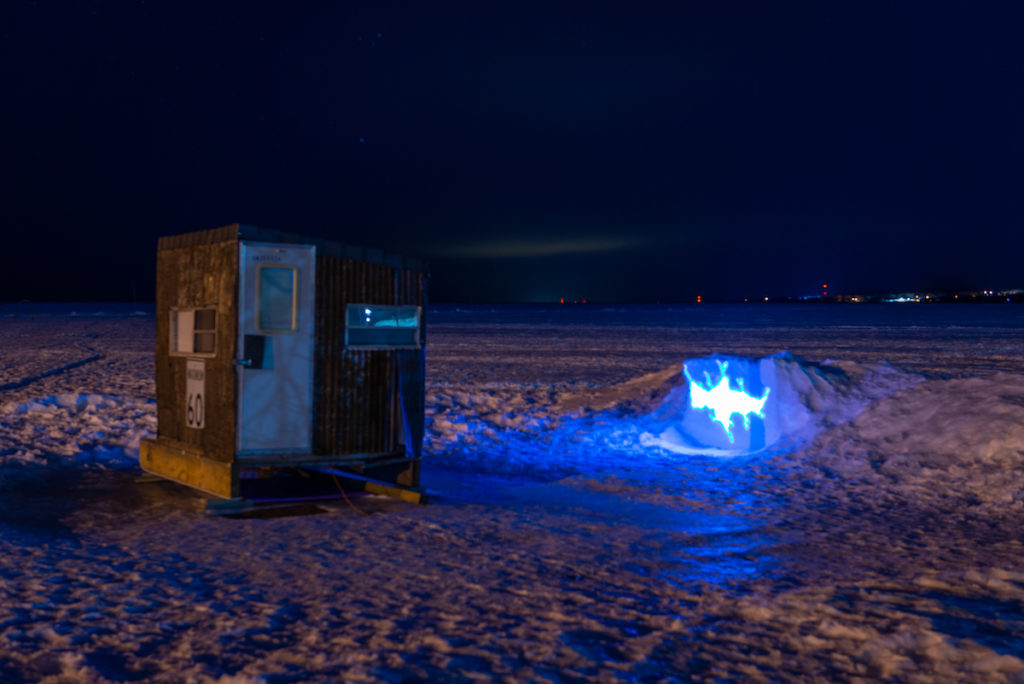


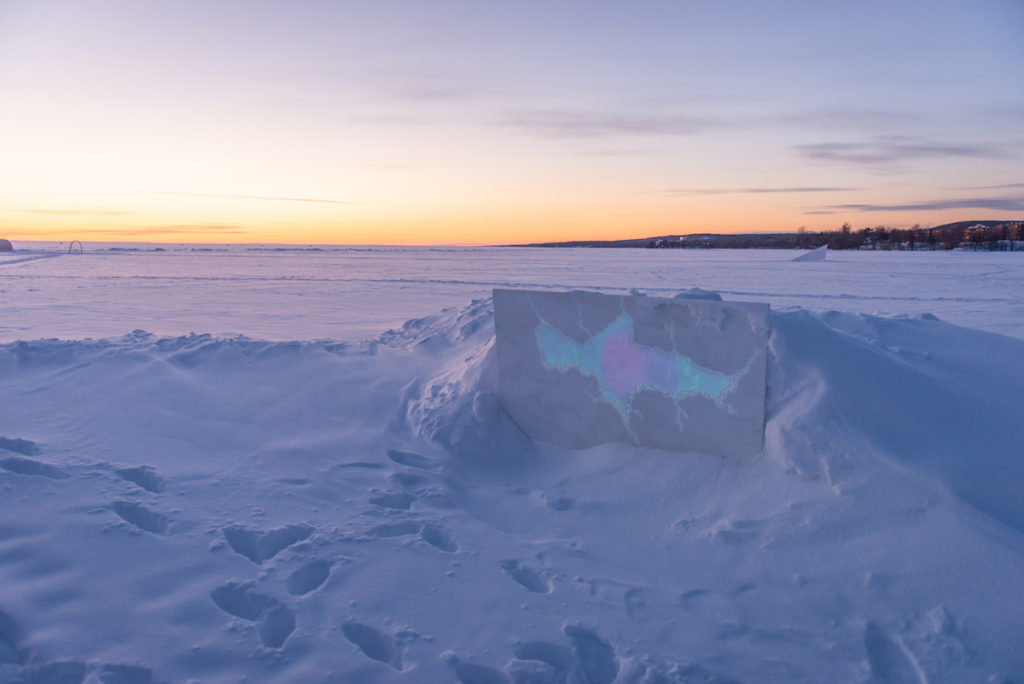
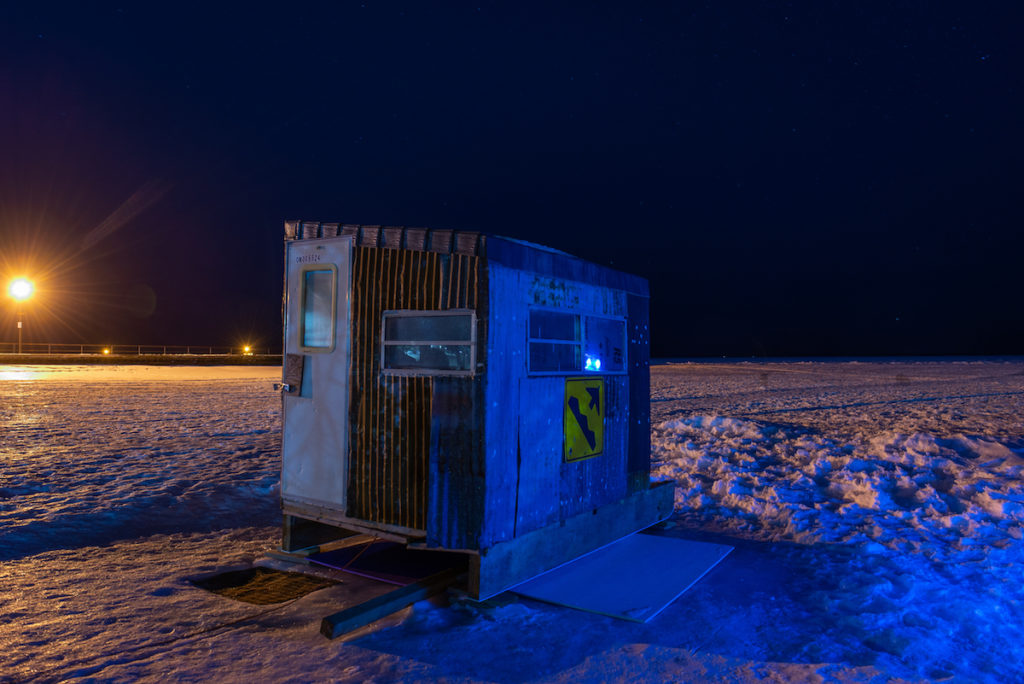
Jon Sasaki, Pictures of the Floating World, 2017
Entirely self-contained, an inflatable castle is adrift on a body of water. An orange blower keeps the castle afloat, and a gas-powered generator keeps the fan running. If the generator or blower fail for whatever reason, the castle will sink in a matter of seconds taking the AC blower, generator, camera and videographer down with it.
Artist Bio:
Jon Sasaki is a Toronto-based multidisciplinary artist whose practice brings performance, video, object and installation into a framework where expectation and out rarely align. Often charting territory between logic and absurdity, his work employs ad hoc problem solving and inefficiencies in thought experiments that search for useful models. His work has been exhibited in solo exhibitions at the Ottawa Art Gallery, (Ottawa, ON); the Southern Alberta Art Gallery, (Lethbridge, AB); the Art Gallery of Ontario. Sasaki has participated in recent group exhibitions at the National Museum of Modern and Contemporary Art, (Seoul, South Korea,) The Bentway, (Toronto); The Canadian Embassy in Japan (Tokyo); and the Museum of Contemporary Canadian Art (Toronto, ON). He has presented performance and intervention projects at the Museum of Contemporary Art Detroit. Toronto’s Nuit Blanche, the Gardiner Museum and the Varley art Gallery. He was the recipient of the 2015 Canadian Glenfiddich Artists in Residence Prize (Dufftown, Scotland.) Saski holds a BFA from Mount Allison University (Sackville, NB) and is represented by Clint Roenisch Gallery in Toronto.



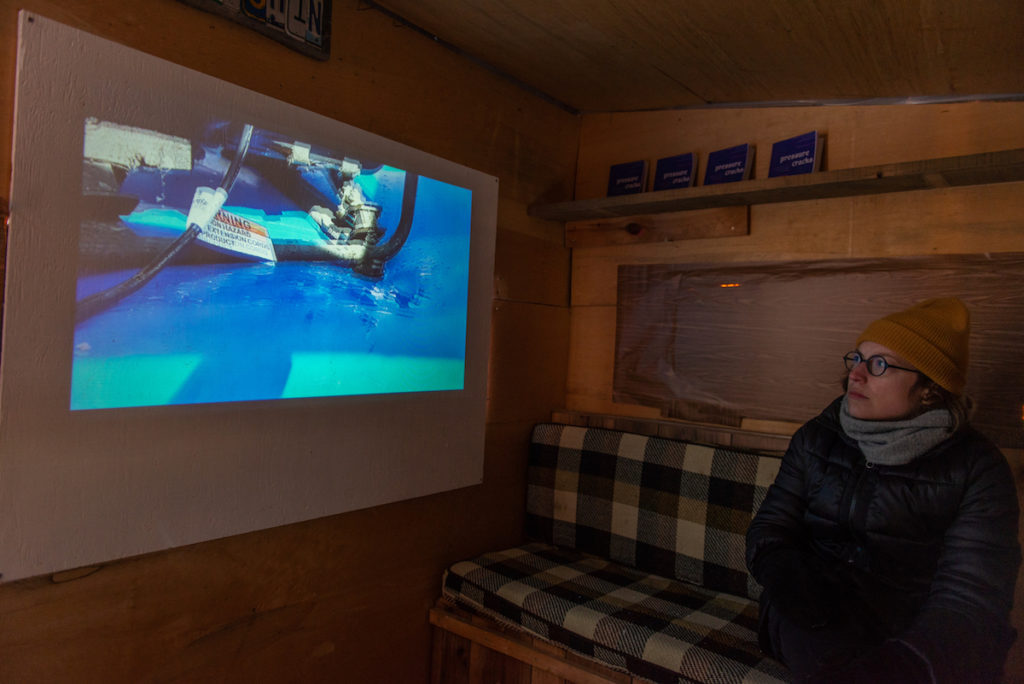
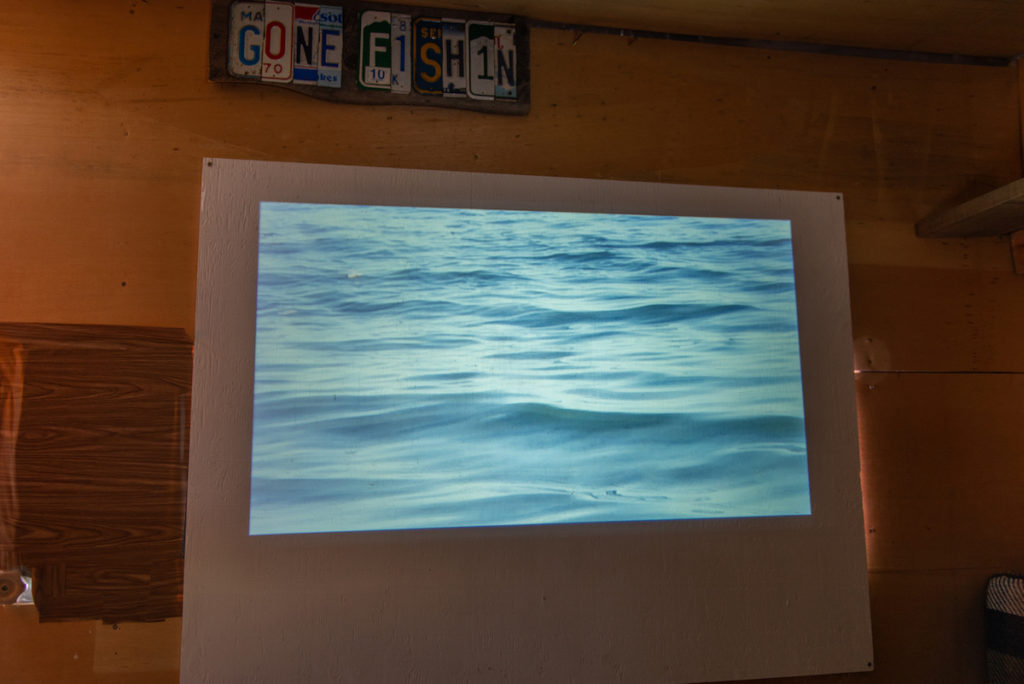
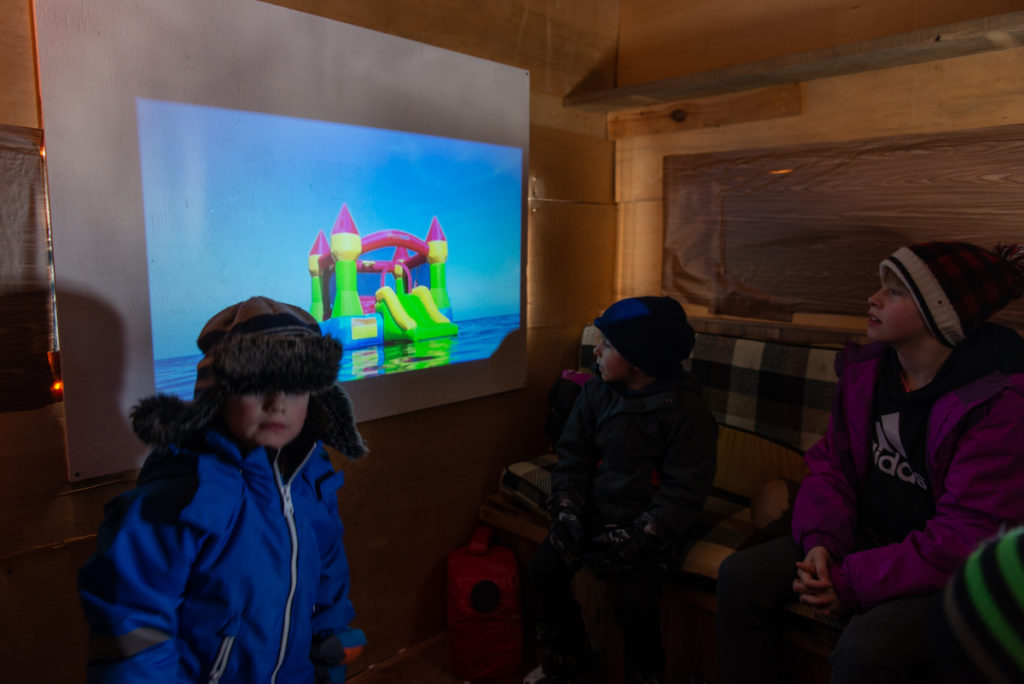


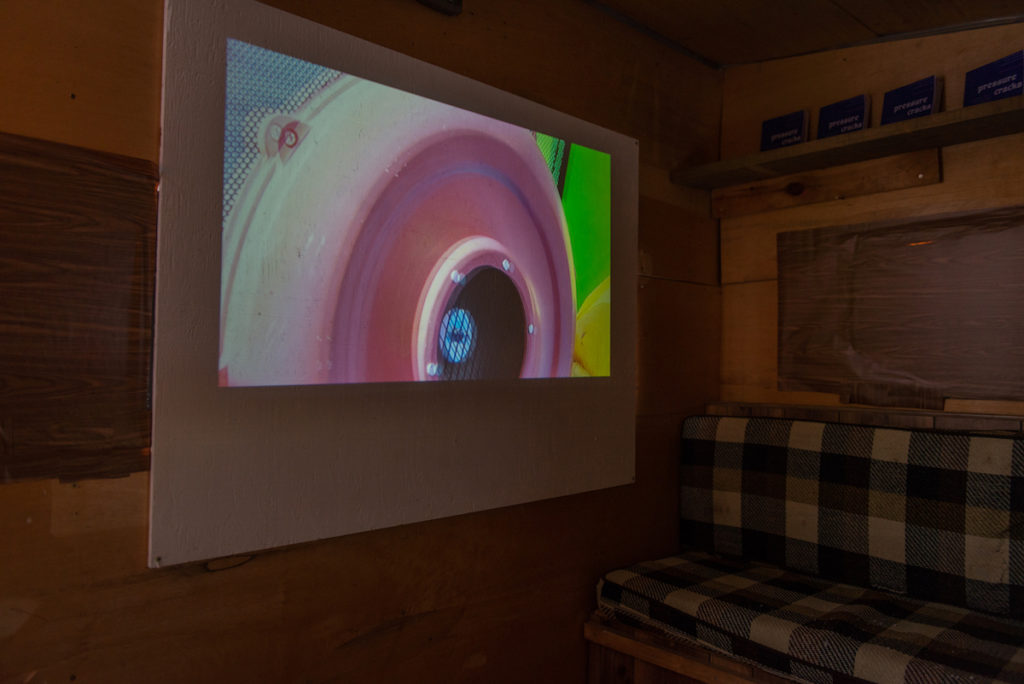
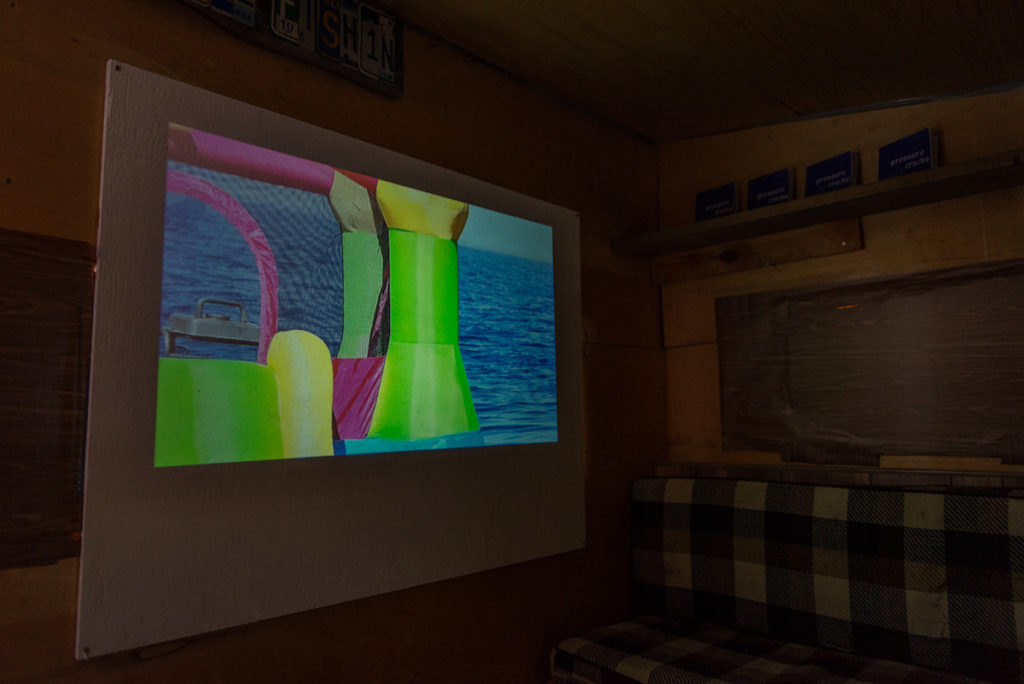

Curated by Minor Hockey Curatorial
Presented by the Near North Mobile Media Lab
Minor Hockey Curatorial is a joint collaboration between North Bay-based curator Robin Alex McDonald and Toronto-based New Liskeard native Alexander Rondeau. Formed in January 2019, Minor Hockey uses curation as a means of bringing objects and people into critical dialogue with one another. Their first exhibition, ‘Above the Belt, Below the Bush’ explored the extra/ordinary fusion of queer glamour and rural northern aesthetics through works by Adrienne Crossman, Danya Danger, Tyler Matheson, Dominic Pinney, Walter K. Scott, and Jordyn Stewart.
Robin Alex McDonald is an arts writer, academic, and independent curator currently living and working on Robertson Huron Treaty territory and the traditional territories or Nipissing First Nation. Robin is a sessional faculty member at Nipissing University and OCAD University, as well as a SSHRC-funded PhD candidate in the Cultural Studies Program at Queen’s University. Their published work can be found in several magazines and journals, including n.paradoxa, nomorepotlucks, Queer Studies in Media and Popular Culture, and Literature and Medicine
Alexander Rondeau is a queer, Francophone curator and interdisciplinary artist from rural Northeastern Ontario. Currently, Rondeau is an OGS-funded first year MFA Graduate in the Criticism and Curatorial Practice graduate program at OCAD University. Rondeau also holds a BFA in Image Arts: Photography Studies from Ryerson University. His curatorial practice is interested in making exhibitions in public spaces such as beaches, hiking trails, and downtown streets with QT2S artists in curatorial projects, he has curated exhibitions for artist-run centres such as the White Water Gallery (following a curatorial residency in the summer of 2019) and the Near North Mobile Media Lab.
